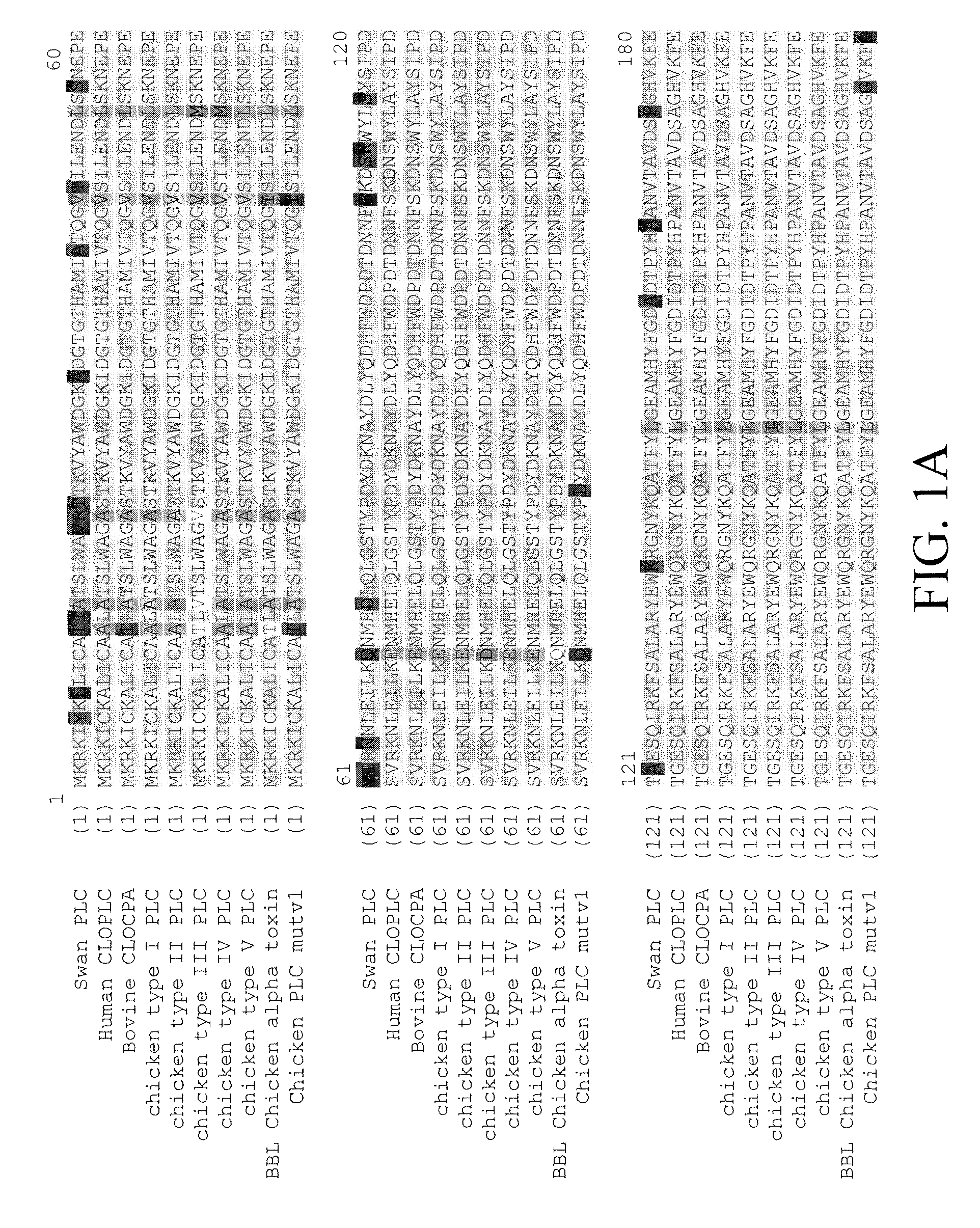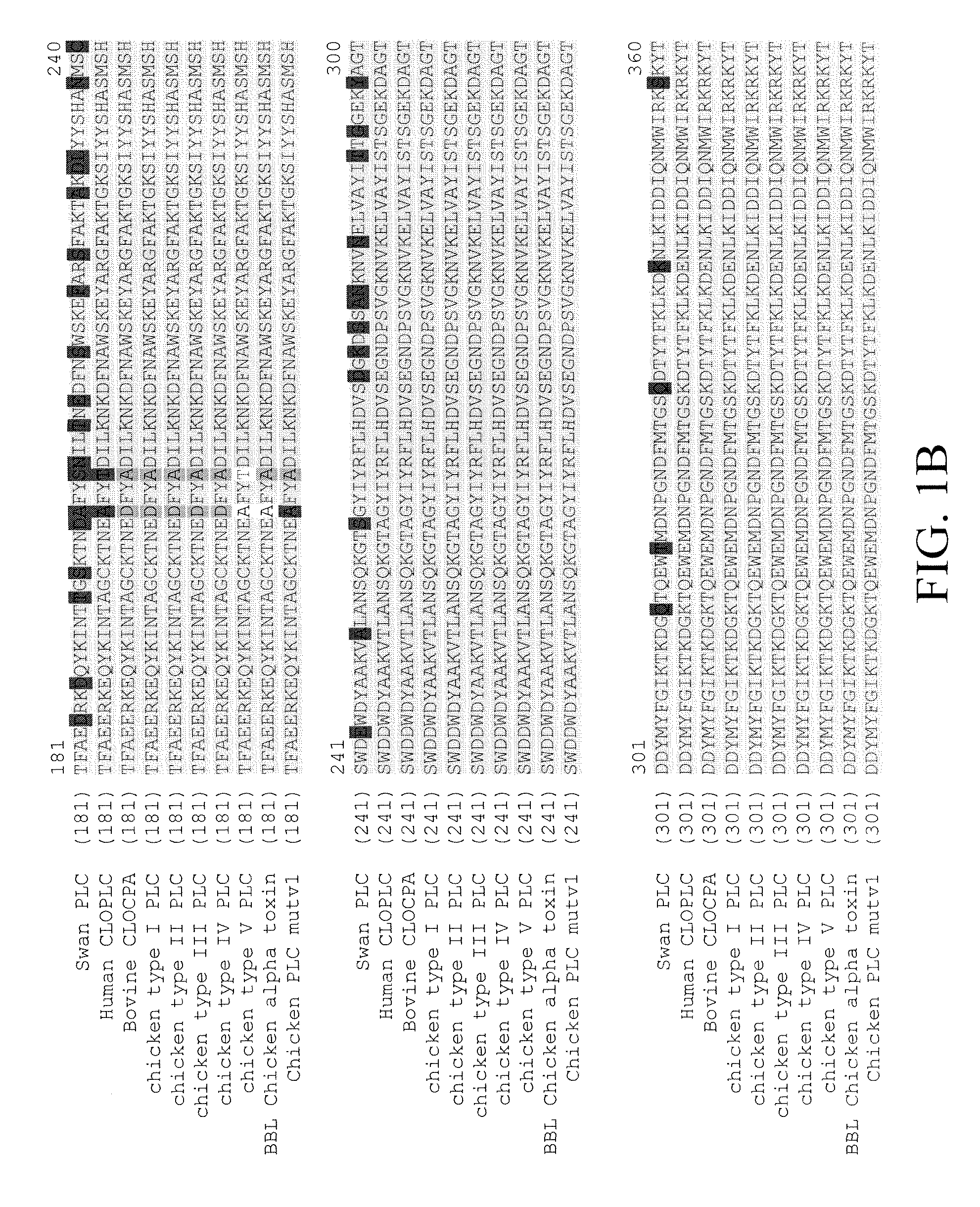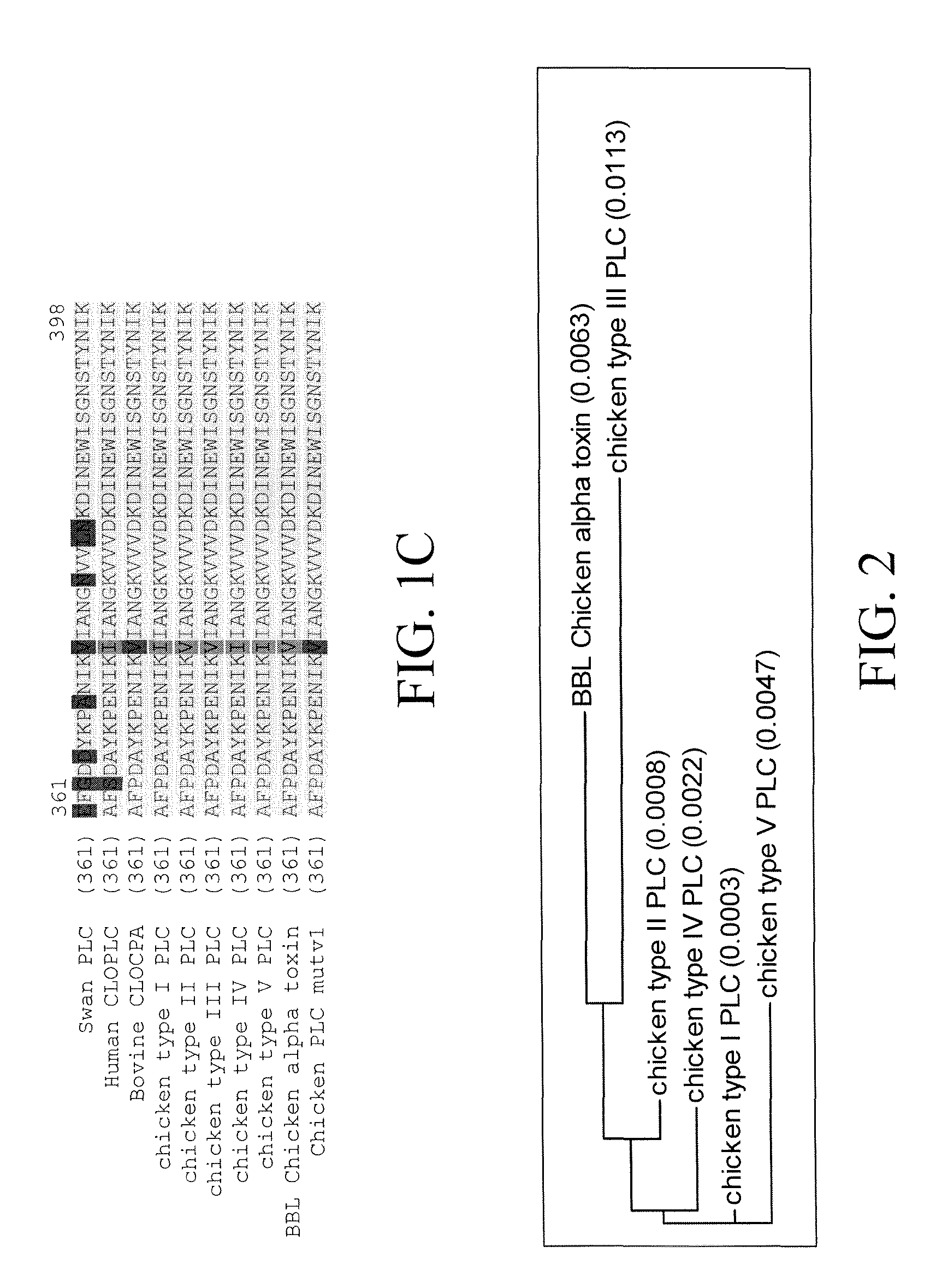Polynucleotides encoding Clostridium perfringens alpha toxin proteins
a technology of clostridium perfringens and polynucleotides, applied in the field of polynucleotides encoding clostridium perfringens alpha toxin proteins, can solve the problems of significant but not complete elimination, and achieve the effect of reducing the severity of ne lesion and reducing the toxicity
- Summary
- Abstract
- Description
- Claims
- Application Information
AI Technical Summary
Benefits of technology
Problems solved by technology
Method used
Image
Examples
example 1
Cloning and Sequencing of a Full-Length Alpha Toxin (cpa) Gene from C. perfringens Isolates Derived from Chickens
[0106]This example describes the isolation and base sequence determination of DNA fragments containing overlapping portions of a gene encoding an alpha toxin protein (cpa) from two strains of Clostridium perfringens. These strains (BBL1 and BBL2) were isolated at Benchmark BioLabs (Lincoln, Nebr.) from the gut of chickens diagnosed with naturally occurring necrotic enteritis. The two isolates came from different birds of the same flock and had different characteristics when grown in the laboratory (e.g. differed in the amount of cpa they secreted in culture filtrates).
[0107]Genomic DNA was prepared from cells of BBL1 and BBL2 and used as the template for Polymerase Chain Reactions (PCR) to amplify overlapping fragments of the cpa gene. Primer sequences were designed from the DNA sequences of the highly conserved cpa genes from human isolates of C. perfringens (GenBank Acc...
example 2
Design and Synthesis of a Mutated Full-Length Alpha Toxin (Mcpa) Gene for Expression in Plant Cells
[0109]Optimization of sequence for expression in plants. To obtain high expression of heterologous genes in plants it may be preferred to reengineer said genes so that they are more efficiently expressed in plant cells. Rice and tobacco are two such plants where it may be preferred to redesign the heterologous gene(s) prior to transformation to increase the expression level (i.e. produce more protein) in a transgenic plant cell. Therefore, a step in the design of genes encoding a bacterial alpha toxin for plant expression (i.e., in addition to the provision of plant gene promoter elements, introns, 3′ untranslated regions, etc.) is reengineering of a heterologous gene protein coding region for optimal expression.
[0110]One impetus for the reengineering of a bacterial alpha toxin coding sequence for expression in plant cells is due to the non-optimal G+C content of the native gene. For e...
example 3
Expression and Purification of 6X-His Tagged Mcpa for Clinical Studies and Antigen Validation
[0127]Construction of E. coli expression vector for C-terminal 6X-his-tagged Mcpa. Plasmid DAS28P7B2 was obtained from PicoScript (Houston, Tex.), containing the synthesized plant optimized Mcpa gene between NcoI and SacI restriction sites. The NcoI / SacI fragment was cloned into pET-41a(+) (Novagen, Cat#: 70556-3) and used for expression in E. coli. This vector yielded a truncated protein. Closer examination of the DNA sequence indicated that the Mcpa sequence was not in frame with the pET-41a(+) N-terminal GST, S, and His-tags. To correct the reading frame and to express Mcpa as an N-terminal GST and C-terminal His-tag fusion the following strategy was used.
[0128]A DNA fragment was designed and custom synthesized at PicoScript to yield DASPICO19. DASPICO19 contained sequence from the SpeI site of pET-41a(+) to the NcoI site, not including the C-terminal 6X-his tag (region between the N-term...
PUM
| Property | Measurement | Unit |
|---|---|---|
| volume | aaaaa | aaaaa |
| temperature | aaaaa | aaaaa |
| temperature | aaaaa | aaaaa |
Abstract
Description
Claims
Application Information
 Login to View More
Login to View More - R&D
- Intellectual Property
- Life Sciences
- Materials
- Tech Scout
- Unparalleled Data Quality
- Higher Quality Content
- 60% Fewer Hallucinations
Browse by: Latest US Patents, China's latest patents, Technical Efficacy Thesaurus, Application Domain, Technology Topic, Popular Technical Reports.
© 2025 PatSnap. All rights reserved.Legal|Privacy policy|Modern Slavery Act Transparency Statement|Sitemap|About US| Contact US: help@patsnap.com



